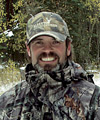|
 |
 |
We’ve all watched the series of movies Jurassic Park, where scientists brought back extinct dinosaurs using genetic engineering techniques. The movies were exciting and the special effects were phenomenal to say the least. Of course, in the end, everything goes awry and dinosaurs run rampant. Thankfully, it was just a movie... or was it?
Suddenly, advances in biotechnology have brought about real-life thoughts of de-extinction, where a species gone extinct gets another chance at life on Earth. Seriously, from The Guardian: “Arguably the most high-profile de-extinction programme aims to recreate, in some sense, the woolly mammoth and return herds of the beasts to the Siberian tundra thousands of years after they died out. The company behind the venture, Colossal, was founded by the Harvard geneticist George Church, and Ben Lamm, a tech entrepreneur, who claim that thousands of woolly mammoths could help to restore the degraded habitat: for example, by knocking down trees, fertilising the soil with their dung, and encouraging grasslands to regrow. If all goes to plan – and it may well not – the first calves could be born within six years.”
Now, I’m not going to pretend I understand all involved in recreating woolly mammoths, so I’ll let you do your own research on those methods, if you so desire. But what I do understand is that with all the talk in today’s world of restoring habitats etc., this is probably not as far-fetched as most would assume; perhaps, we are traveling down that Jurassic Park road.
The Texas-based biotechnology “de-extinction” company Colossal has also recently announced they would be bringing back the thylacine, also known as the Tasmanian tiger. Dog-like in appearance, the thylacine was extensively hunted after European colonization, with the last known survivor dying in captivity in 1936. Colossal’s plan is to introduce the animal in a controlled setting on private Tasmanian land (sounds like Jurassic Park to me) before returning it to the wild.
Another company called Revive & Restore claims they are “the leading wildlife conservation organization promoting the incorporation of biotechnologies into standard conservation practice.” Out of California, Revive & Restore have projects underway that aim to “revive and restore” more than 40 different species including the passenger pigeon and the heath hen, a sub-species of the greater prairie chicken that went extinct in the 1930s. They have already cloned the endangered black-footed ferret.
But is all of this a good idea?
According to Leah Worthington, in an article published by the Cal Alumni Association, “It’s worth noting that humans don’t exactly have a good track record when it comes to ecosystem interventions.”
Using the cane toad (introduced to Australia to control beetles), as an example, “The founding 102 cane toads swiftly multiplied to the thousands, then hundreds of thousands. Their present population somewhere around 200 million, cane toads are considered one of the world’s worst invasive species,” wrote Worthington.
And when the passenger pigeon flew the skies they numbered in the billions, do we really want that?
Ryan Phelan, co-founder and executive director of Revive & Restore points to an exit strategy should things get out of hand. “There is a recall button if you need it. And it’s called hunting,” she said.
De-extinction is an idea that has much life, pun intended. According to BiologyWise, “If we are able to resurrect species that have become extinct, especially the keystone species, we will also be able to revive ecosystems that have either been damaged or have disappeared. We will be able to use some of these species as flagship species to protect entire ecosystems. Simply put, de-extinction is the need of the hour, if we are to save the fast-depleting environment.”
But in the same breath, we need to ask ourselves, should we be playing God? Where would we put these suddenly not-extinct animals? Will they become a problem for the species that replaced them? Will they suddenly become invasive species themselves? Will there be human-wildlife conflict? What will be the cost to ensure the resurrected species continue to survive and thrive? Is there a chance that one or more of these species becomes a FrankenAnimal? There are a million reasons we shouldn’t be messing with de-extinction, probably more reasons against than there are for. Having said that, wouldn’t it be cool to hunt passenger pigeons or woolly mammoths, as our ancestors did? ■
For previous Outdoor Pursuits click here.
|
|
|
|


